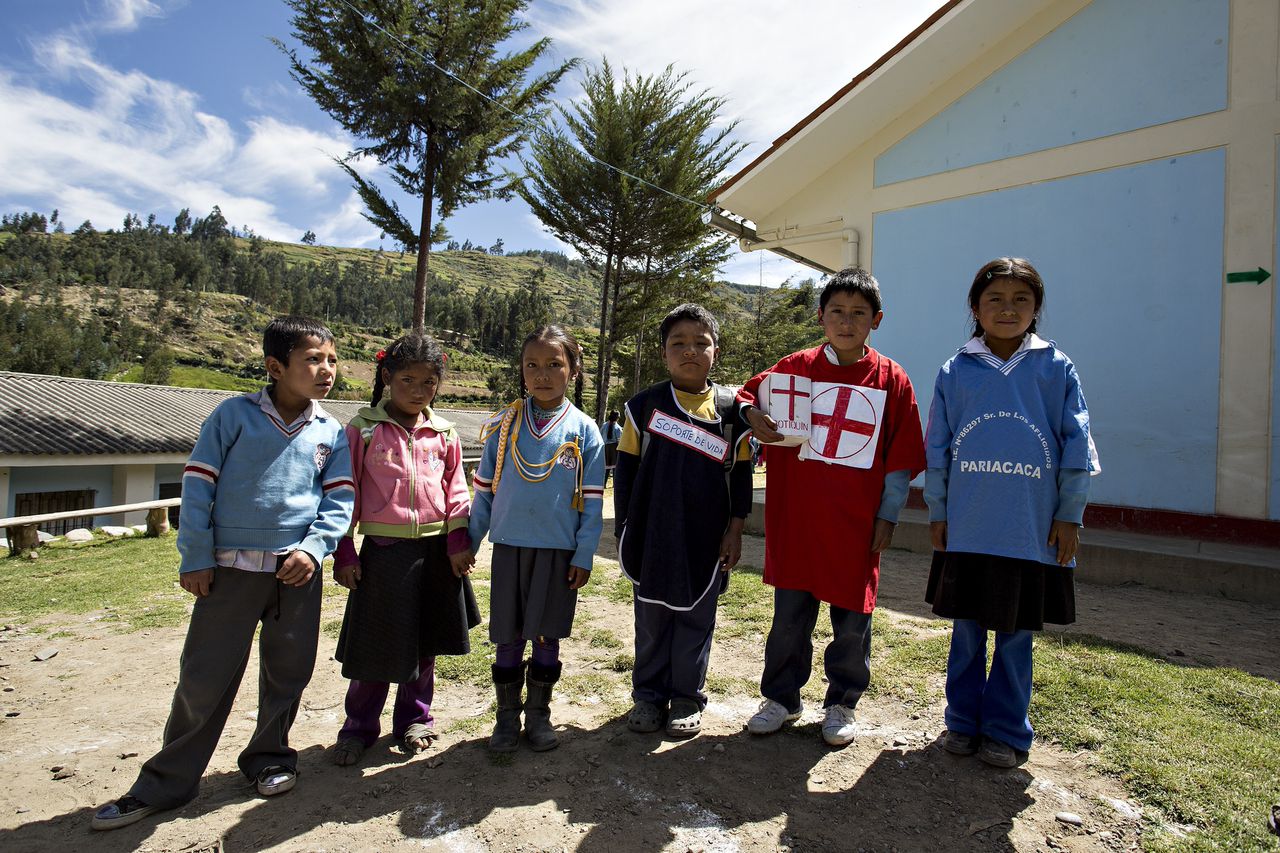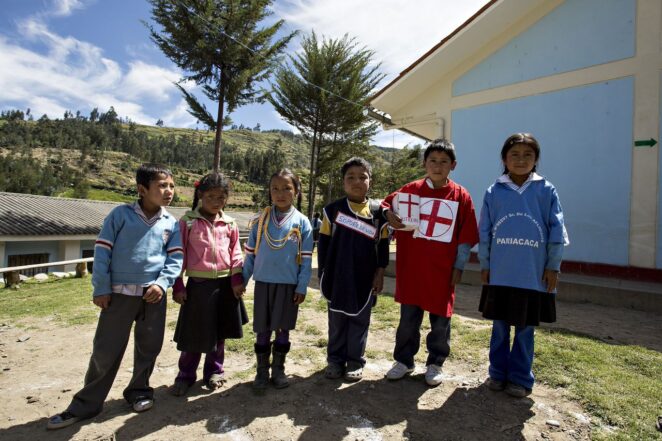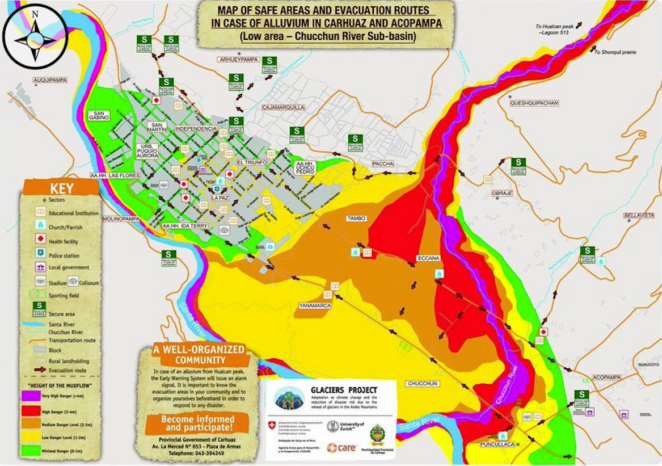Preparing for glacial lake outbursts in Peru


School children practice their emergency response in Carhuaz, Peru. © PRAA project staff / CARE
Peru has one of the largest concentrations in the world of tropical glaciers. Most of these are located in the Cordillera Blanca in Ancash, in northern central Peru. These high mountain ecosystems have always been prone to major geophysical events, such as the 1970 Ancash earthquake, which triggered a glacial lake outburst flood and debris flow that destroyed the town of Yungay, leaving 20,000 dead. With climate change, many of these glaciers are retreating fast and the glacial lakes they leave behind are highly unstable and constitute a growing threat to populations in the valleys below.
In an attempt to avoid another tragedy like Yungay, the Peruvian government and the Swiss Development Cooperation, together with CARE Peru and the University of Zurich, initiated a project aimed at improving national and local capacities for monitoring mountain glaciers and associated lakes, and designing early warning systems for vulnerable communities located downstream. CARE Peru and partners focused on reducing vulnerability and on risk reduction strategies, including women’s empowerment, strengthening livelihoods and building adaptive capacity in Santa Teresa, in Cusco, and Carhuaz, in Ancash.
Capacity development for local civil society and government institutions
Santa Teresa is a community located in a hazardous landscape, in a watershed area fed by glacial melt waters. Here the project team worked with communities, and national and local partners, to design a risk management system that includes a radio communication system to provide an early warning for flash floods in this micro-watershed area of the SacsaraRiver.
The project helped the Municipality of Carhuaz to strengthen its capacity to manage future risks through the creation of a Water Resources Management Committee. This group helps with interagency coordination of water users and the government institutions that have decision-making power, thus increasing their effectiveness and reducing conflict between stakeholders.
In Carhuaz, the project also helped to facilitate technical and scientific cooperation between Peruvian institutions and Swiss experts in the monitoring and modelling of glacial retreat. The modelling of different flood scenarios helped local authorities to identify potential hazards, through the mapping of debris flows (see figure 9). These maps led to the development of an early-warning system for glacial outburst floods, with planned evacuation routes and disaster responses. Through these activities, the project is building local capacities to adapt to a changing environment and manage emerging risks from the impacts of climate change on tropical glaciers.

Map of potential debris flow near the town of Carhuaz, Ancash, Peru
Disaster risk reduction strategies to reduce the impact of hazards on vulnerable households
Community-based multi-stakeholder platforms have improved risk management in Santa Teresa by integrating adaptation and risk-reduction activities into community and municipal development plans. The project also works in local schools to develop disaster contingency plans, which increase the awareness of risk management and response among faculty and students. By training local leaders, both women and men, in adaptation and disaster risk reduction (DRR), as well as gender equality issues and women’s empowerment, the project has strengthened the community’s capacity to monitor and assess risks.
In Ancash, the project has focused on responding to the impacts of climate change through early warning systems. These communities have experienced recurrent impacts of glacial lake outburst floods. Carhuaz has boosted community-level knowledge of climate change, and is working hard to reduce the risks posed by glacial retreat.
Advocacy and social mobilisation to address the underlying causes of vulnerability
The early warning system has also contributed to the institutional strengthening of local government and civil defence platforms by providing opportunities for training, technical knowledge and relationship-building. The multi-stakeholder co-design of risk management plans has integrated municipal actions within broader regional and national spaces.
The project has also sought to address the drivers of differential vulnerability, particularly from a gender perspective, confronting and transforming power relations, and encouraging balanced gender participation in planning committees.
The project hopes that improved monitoring of glacial retreat rates and applied modelling of debris flows, together with capacity-building activities, will improve the effectiveness of early warning systems and reduce risk in communities already affected by climate change.
Promotion of climate-resilient livelihoods strategies
Local farmers in the Carhuaz valley were consulted about how to reduce their vulnerability to the impacts of climate variability and climate change. One of the critical factors in managing risk in agricultural production relates to access to sustainable irrigation. This would help reduce seasonal losses due to extreme climate events, and in the face of glacial retreat would improve efficiency in the use of scarce water resources. In Carhuaz, the project has been developing a drip irrigation system, helping farmers to improve their productivity, reduce losses due to seasonal drought and, in the longer term, improve resilience to the impacts of climate change.
(0) Comments
There is no content